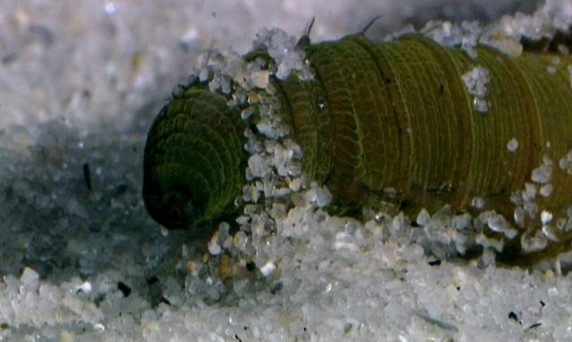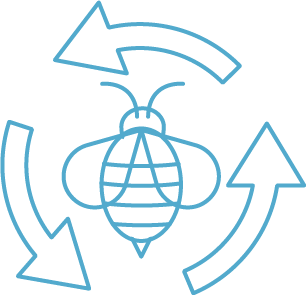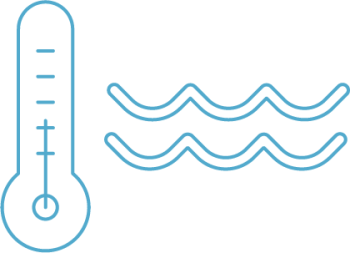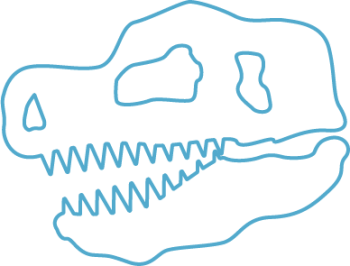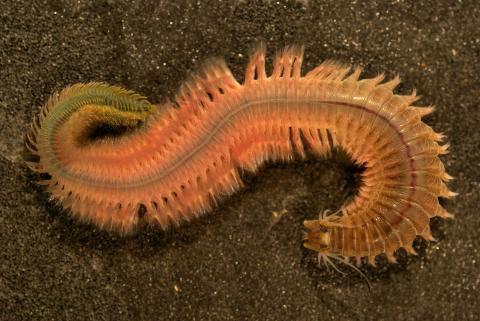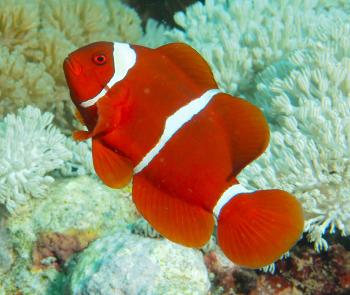Annelids have adapted to almost every possible ecological niche from active predator to sedentary filter feeder. They are active burrowers, they swim in pelagic waters, they live at deep sea hot vents. They are members of every trophic level and are important in their ecosystems.
Bioturbation is the disturbance of soil or sediment by living things. Since worms are excellent burrowers, eating and excreting sediment, many annelids cause biorturbation. The worms are providing a service to the ecosystem by loosening sediment and helping with the penetration of air and water – some call this ecosystem engineering. Bioturbation by earthworms is so important that Charles Darwin wrote about it. Bioturbation: A Fresh Look at Darwin’s Last Idea.
Like the earthworms on land, Lugworms work the substrate where they live on sandy and muddy beaches.
